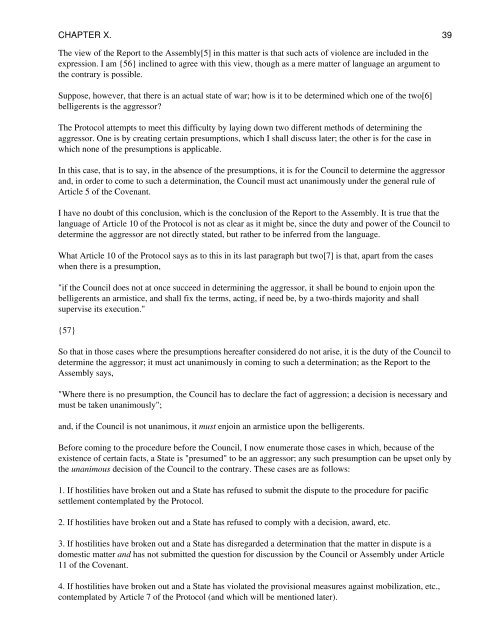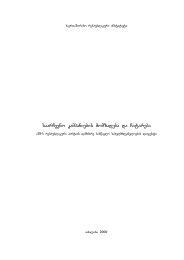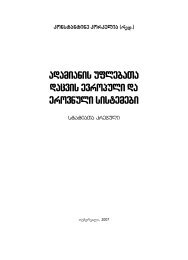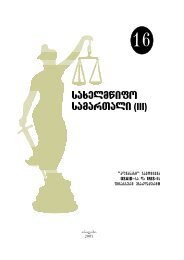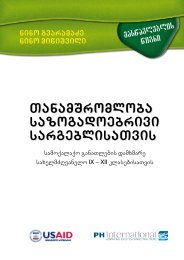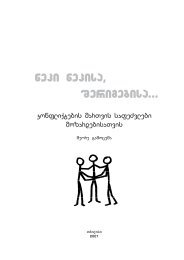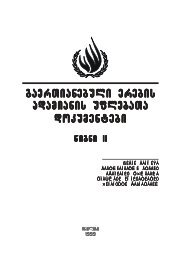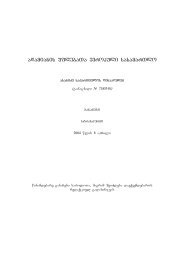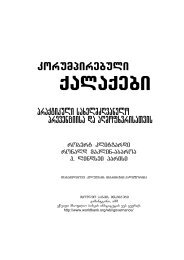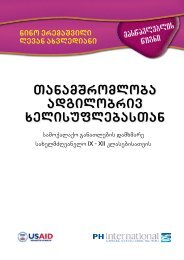The Geneva Protocol, by David Hunter Miller
The Geneva Protocol, by David Hunter Miller
The Geneva Protocol, by David Hunter Miller
Create successful ePaper yourself
Turn your PDF publications into a flip-book with our unique Google optimized e-Paper software.
CHAPTER X. 39<br />
<strong>The</strong> view of the Report to the Assembly[5] in this matter is that such acts of violence are included in the<br />
expression. I am {56} inclined to agree with this view, though as a mere matter of language an argument to<br />
the contrary is possible.<br />
Suppose, however, that there is an actual state of war; how is it to be determined which one of the two[6]<br />
belligerents is the aggressor?<br />
<strong>The</strong> <strong>Protocol</strong> attempts to meet this difficulty <strong>by</strong> laying down two different methods of determining the<br />
aggressor. One is <strong>by</strong> creating certain presumptions, which I shall discuss later; the other is for the case in<br />
which none of the presumptions is applicable.<br />
In this case, that is to say, in the absence of the presumptions, it is for the Council to determine the aggressor<br />
and, in order to come to such a determination, the Council must act unanimously under the general rule of<br />
Article 5 of the Covenant.<br />
I have no doubt of this conclusion, which is the conclusion of the Report to the Assembly. It is true that the<br />
language of Article 10 of the <strong>Protocol</strong> is not as clear as it might be, since the duty and power of the Council to<br />
determine the aggressor are not directly stated, but rather to be inferred from the language.<br />
What Article 10 of the <strong>Protocol</strong> says as to this in its last paragraph but two[7] is that, apart from the cases<br />
when there is a presumption,<br />
"if the Council does not at once succeed in determining the aggressor, it shall be bound to enjoin upon the<br />
belligerents an armistice, and shall fix the terms, acting, if need be, <strong>by</strong> a two-thirds majority and shall<br />
supervise its execution."<br />
{57}<br />
So that in those cases where the presumptions hereafter considered do not arise, it is the duty of the Council to<br />
determine the aggressor; it must act unanimously in coming to such a determination; as the Report to the<br />
Assembly says,<br />
"Where there is no presumption, the Council has to declare the fact of aggression; a decision is necessary and<br />
must be taken unanimously";<br />
and, if the Council is not unanimous, it must enjoin an armistice upon the belligerents.<br />
Before coming to the procedure before the Council, I now enumerate those cases in which, because of the<br />
existence of certain facts, a State is "presumed" to be an aggressor; any such presumption can be upset only <strong>by</strong><br />
the unanimous decision of the Council to the contrary. <strong>The</strong>se cases are as follows:<br />
1. If hostilities have broken out and a State has refused to submit the dispute to the procedure for pacific<br />
settlement contemplated <strong>by</strong> the <strong>Protocol</strong>.<br />
2. If hostilities have broken out and a State has refused to comply with a decision, award, etc.<br />
3. If hostilities have broken out and a State has disregarded a determination that the matter in dispute is a<br />
domestic matter and has not submitted the question for discussion <strong>by</strong> the Council or Assembly under Article<br />
11 of the Covenant.<br />
4. If hostilities have broken out and a State has violated the provisional measures against mobilization, etc.,<br />
contemplated <strong>by</strong> Article 7 of the <strong>Protocol</strong> (and which will be mentioned later).


